Trigger warning: Mention of abuse and rape.
In 2008, a social worker at a government hospital in Maharashtra’s Beed district was intrigued by a commotion that had ensued. Tatwashil Kamble (40), who was at the hospital to donate blood, soon found the answer — the death of a 17-year-old girl. While the cause of her death had been ascertained as ‘mata mrutyu’ (death of a woman during childbirth), Kamble knew there must be more to it. Sadly, talking to the people around him and the doctor left him aghast.
They revealed that the girl had been to the hospital several times in the last three years over attempted pregnancies. The social worker was quick to deduce that this girl had been married at the age of 14 in a blatant case of child marriage.
This was shocking to him. But what the medic said next — “This is just one of many such cases” — compelled Kamble to dedicate the rest of his life to the cause of stopping child marriages in Beed.
Elaborating on this, he says that while a majority of such cases were bracketed as ‘maternal deaths’, the real cause of death is child marriage.
Kamble was joined by Ashok Tangde (55) in his quest to put a halt to this widespread practice. As part of the Child Welfare Committee (CWC) — an autonomous institution formed under the Juvenile Justice Act (2015) — the duo has been working to ensure a safer world for girls in the Beed district.
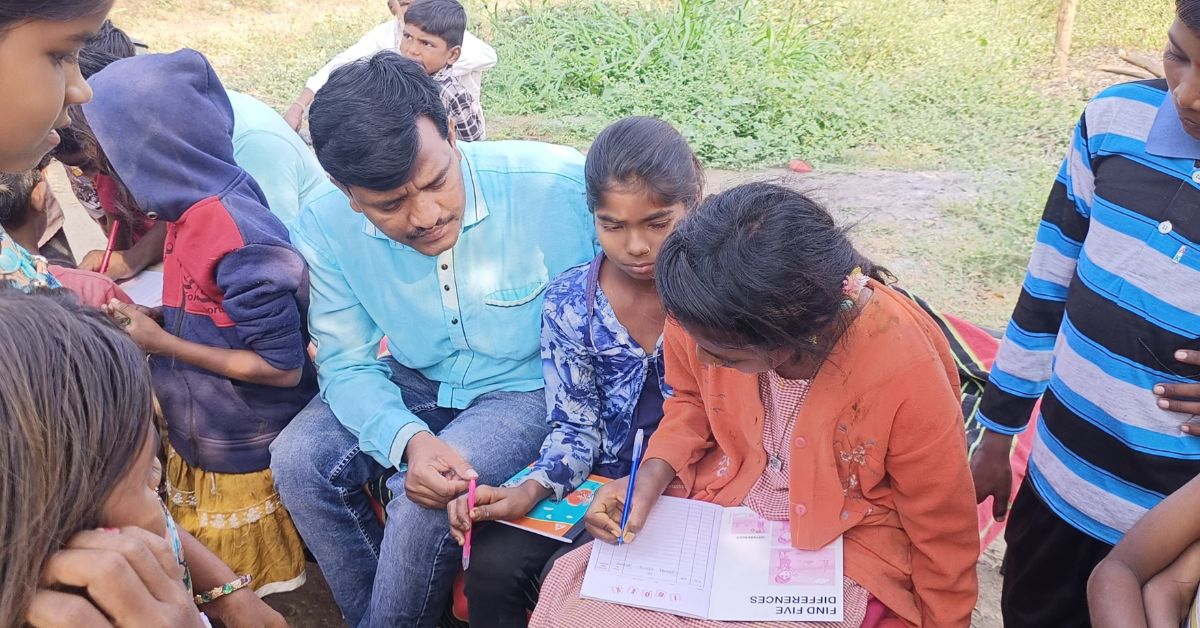
How sugarcane is tied to the social evil
The ‘epicentre of sugarcane cutters’, Beed is deserted every year in October as thousands of farmers migrate to Western Maharashtra and Karnataka to cut cane for the factories in these regions. “To add to this, drought and poverty in the district make it tough for these farmers to care for their children,” Kamble explains.
The young ones fall to neglect. The farmers can neither leave their children alone at home for fear of their safety nor can they take them along to the fields which might interfere with their productivity. And so, they choose the third unsuitable option: marrying their kids off.
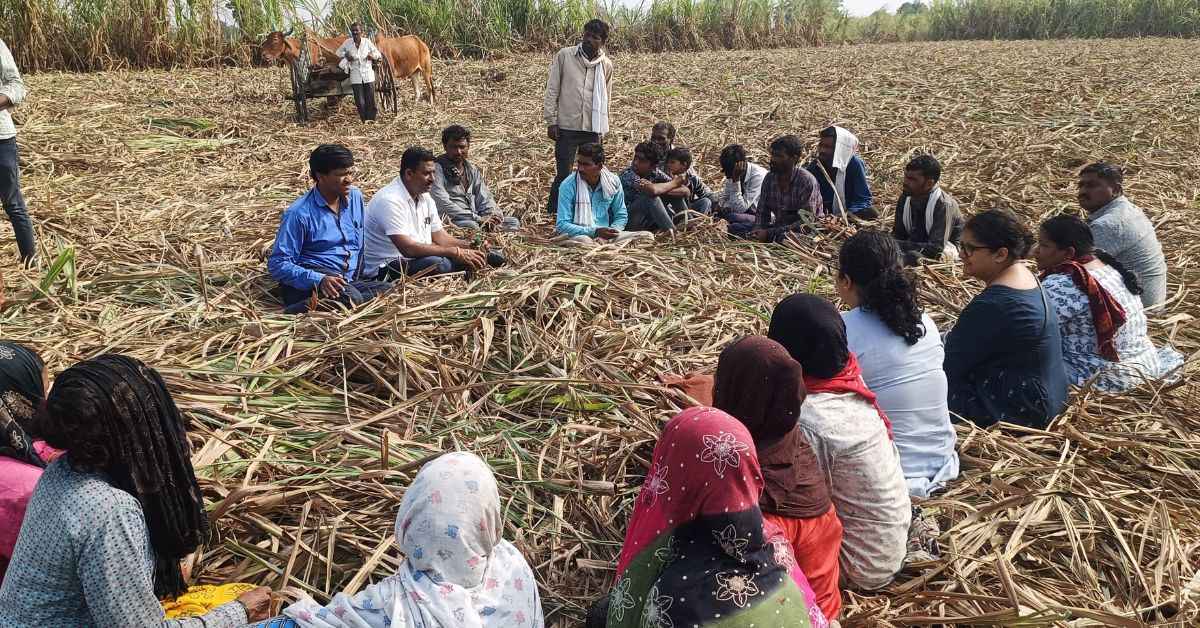
As a UNICEF report points out, one in three of the world’s child brides live in India. The report continues that the country is home to 223 million child brides. At the onset of their journey, these statistics once shocked Kamble and Tangde into advocating for the rights of children. However, they now simply disagree with them.
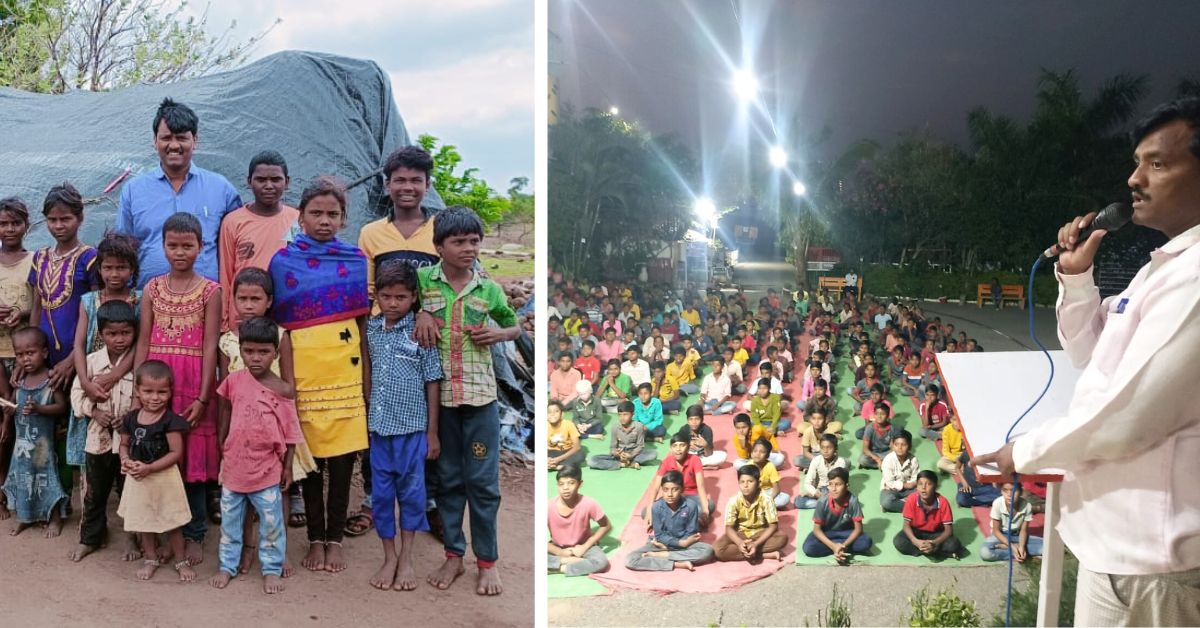
The number on the ground easily bypasses this figure, Kamble notes. In fact, their journey has given them a window into the children’s pain and led them to discover how the repercussions of child marriage are multi-pronged. “Not only do these children lose out on an education, but they also go through trauma. On our hospital visits, we see teenagers as young as 16 deliver babies, and 22-year-olds having hysterectomies,” Kamble shares.
The incidences of maternal death increase in the younger population, according to the National Commission for Protection of Child Rights. Based on the Census (2011) data, the report states that girls between the ages of 10 and 14 are five times more likely to die during pregnancy and childbirth than women in the 20-24 age group.
Child marriage needs to be put to an end
With this goal in sight, the duo spent the initial few years of their advocacy working with district collectors, superintendents of police, and gram sevaks (village heads) to create awareness about the rising instances of young wards being given away to older men in matrimony.
Along the way, they discovered that complacency was the reason behind the social evil. And so, their attempts to educate the authorities and get a plan in place to single out potential child marriages and stop them from happening, began.
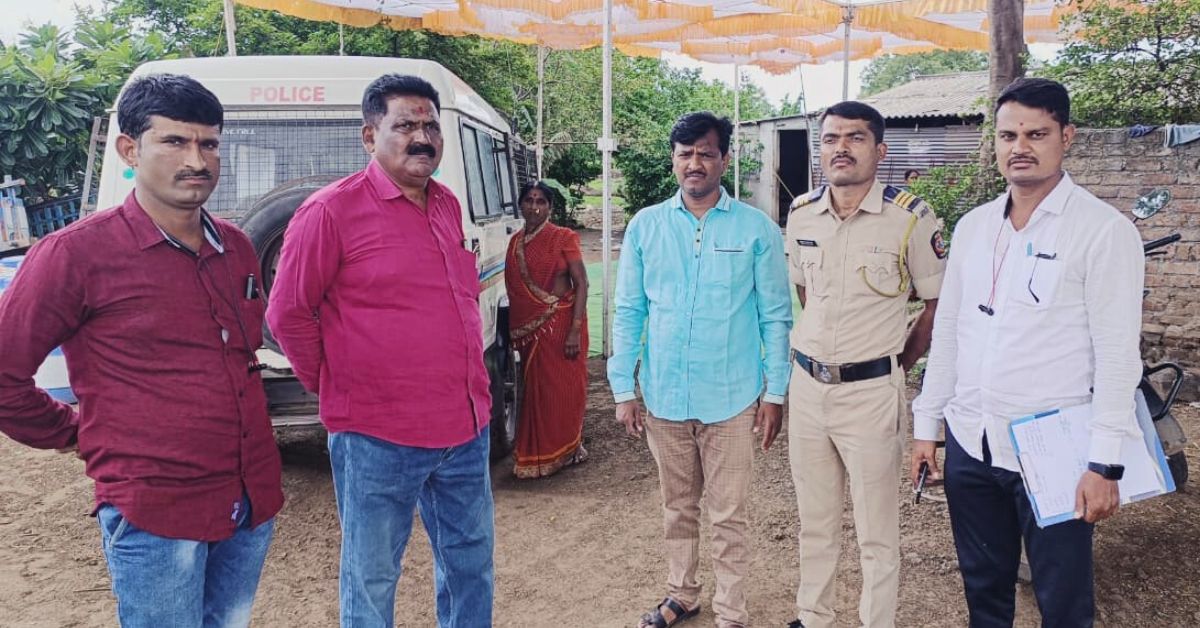
Within minutes of a tip-off, Kamble and Tangde would reach the spot and save the day. But with time, they began seeing a flaw in the plan. “We couldn’t be everywhere,” Tangde sighs. This gave birth to a network of informants, social workers, and women from various self-help groups in the villages.
But just as they thought their plan was foolproof, they saw another loophole. “Stopping a child marriage in one village only led the family to get the child married in another,” shares Kamble. To stop this and the stigmatisation of the girls following the event, the duo designed a strong rehabilitation plan.
Since 2011, the two social activists have been enrolling the survivors of child violence and child marriages in schools, counselling families, enabling access to government schemes that would benefit girls, and following up until the girl reaches 18 years of age.
“We also put rape survivors in touch with child protection services. In these cases, simply giving them financial aid is not enough,” says Kamble.
He explains, “Some of the survivors are young children, while some are even disabled. They need to have their documents in order to make a strong case. We help them with this, connect them with district-provided lawyers, and guide them with how to approach court.”
But despite the nobility of their work, people in rural Beed do not appreciate their meddling.
Putting this case into point, Kamble tells the story of a young girl Anjali (name changed) who contacted him for help as she was being coerced into marriage. “We tipped off the media and police, and headed to the location,” he says.
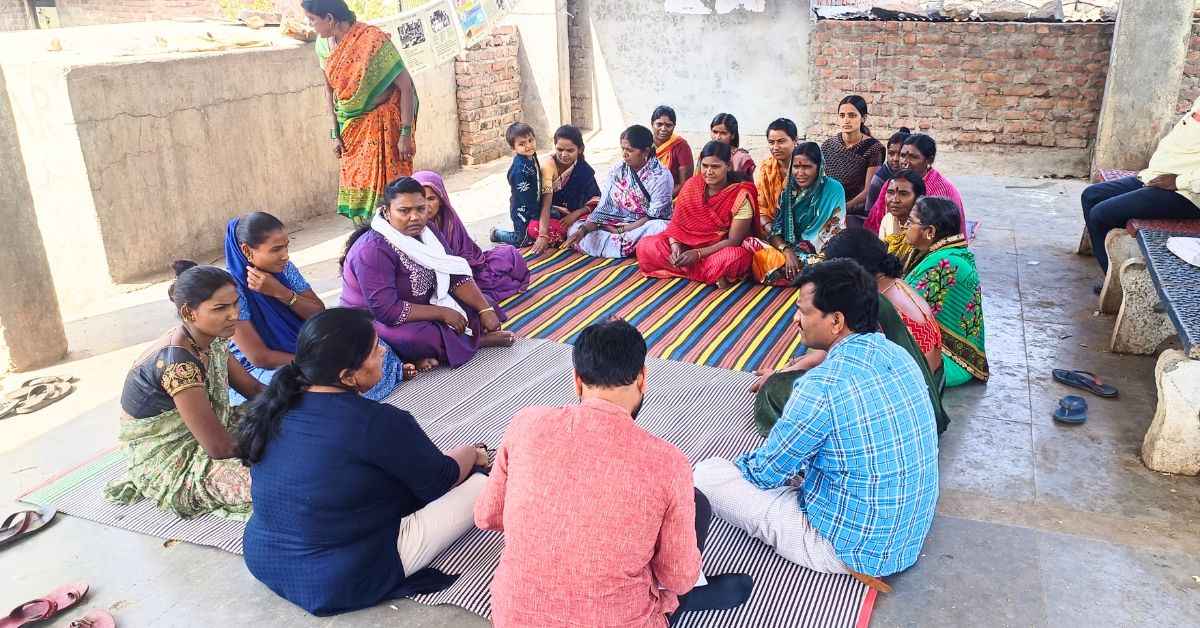
The police got there before Kamble could. “The family denied that a child was being married off. They insisted that a usual family function was being celebrated. When the police finally got them to admit the crime, the girl’s mother began threatening to end her life if the police did not allow the marriage to proceed.”
Kamble was able to mitigate the dramatic turn of events by counselling the family, educating them about the distorted future that awaited the girl, and stopping the marriage.
It is impossible to expect a change overnight. A change in mindset will take time, he believes.
Changing the narrative through digital intervention
Since 2011, Kamble shares that he and Tangde have been successful in stopping around 250 child marriages every year. Of these 250, they say that over 25 children have been given a new lease on life through rehabilitation. He also claims that over 70 child sexual abuse survivors are rehabilitated each year as well.
“In our early years of work, people in Beed weren’t even aware of the Prohibition of Child Marriage Act, 2006,” Kamble says, adding that a light at the end of the tunnel is that people know about the Act now. “They are starting to see sense in letting their daughters study instead.”

Vivekanand Ashok Giri, a village head, seconds this. “Tatwashil and Ashok take immediate action when they get a complaint of a child marriage happening. They work closely with us and the village authorities to do this.” He adds, “In a month, Beed sees around five child marriages nowadays. We are successful in stopping many of these.”
Blowing the whistle on a practice that has been customary for years now, must be tough, I assume. Kamble mirrors the sentiment. But he insists that in every undertaking of good work, there is bound to be some resistance.
Sharing an anecdote of his college days, when he was pursuing his MSW (Masters in Social Work), he says, “There was very little awareness about blood donation at the time. I started working with a few friends to organise camps to encourage people to donate blood. But the donors’ parents weren’t too happy about it.”
They would berate him for forcing their wards into giving blood which they believed would “make them less human”. But gradually, the notion was dispelled and Kamble became the first point of contact in cases where someone needed blood for a relative or friend.
It was his work in blood donation that connected him with doctors, paramedics, social workers and others — the same network that he now relies on for information on child marriages in Beed.
In fact, as Kamble interjects, technology has proved very resourceful, especially WhatsApp. “We can send the victims’ details and pictures to the authorities and the nearest social worker. It speeds things up,” he notes. Prior to 2015, when the app wasn’t as popular, he says it was tough navigating cases and a slow process.
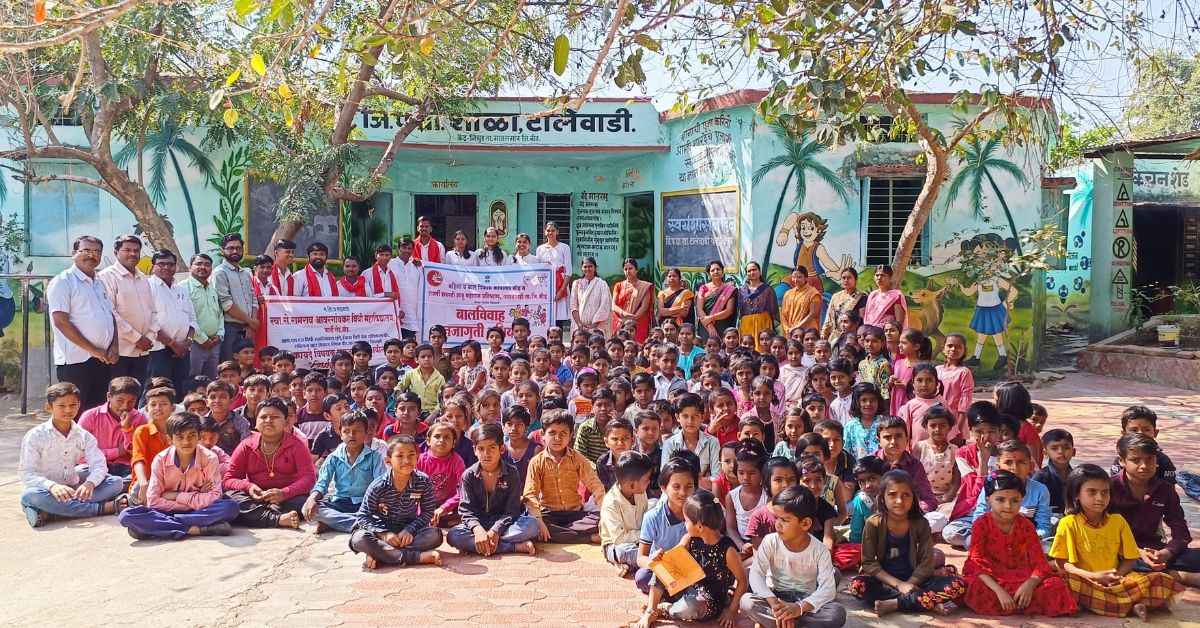
“We would get tip-offs on a call. Then we would head to the authorities and collect documents. There was a lot of hearsay and paperwork. It was a hassle.” He shares a few anecdotes of how vital information like the girl’s age got lost in conversation once or twice. “We reached the location and found out that the bride was well above 18 years old. We had dinner there and headed back,” he shares in a lighter vein.
But even in cases where there is an underage girl being wedded off, the duo maintain that halting a wedding is just the first step. “We then counsel the family to understand what led to them taking this step,” Tangde shares.
Then, a police case is registered under The Prohibition of Child Marriage Act, 2006 against the adults involved. If the marriage is consummated, the man is charged under Protection of Children from Sexual Offences (POCSO) while the CWC takes the underage girl under protection.
Sharing one of the most recent cases, Kamble says they got a tip-off about a child marriage that had already taken place a few weeks prior. “I informed the gram sevika and asked her to go to the girl’s home. For three days, no one answered the door.”
On the fourth day, the group led by Kamble reached the house at 6 am. They spoke to the girl, helped her re-register in the local school, and then proceeded to file an FIR against the family. “The girl is studying now and is happy,” Kamble informs.
Ask the duo about their most challenging case and they respond it wasn’t a case, but instead a period of time. “Child marriages peaked in Beed amid the COVID-19-induced lockdown. We have more than 1,300 villages here and each village witnessed 10 cases,” Kamble notes.
The fact that gatherings were less crowded and not many people in the village knew about these weddings because of social distancing made it tougher for the duo to track down the miscreants.
But with each case they solve, the duo says it increases their will to do better. And each time they hear of a survivor who has risen to success despite the odds, it makes them proud. “Just recently, one of the girl’s fathers came to us with pedhas (milk sweets) to celebrate his daughter completing her BHMS degree (Bachelor of Homoeopathic Medicine and Surgery). The girl was rescued by us a few years ago.”
He shares another story of a girl who recently scored 93 percent in her board exams. “At the age of 14, we had stopped her from being married off and had her enrolled into school once again. Her achievement is great.”
While these stories are heartening for Tangde and Kamble, they say the end goal is a world where girls do not need saving. A world where freedom will reign without fighting for it.
Edited by Padmashree Pande
No comments:
Post a Comment